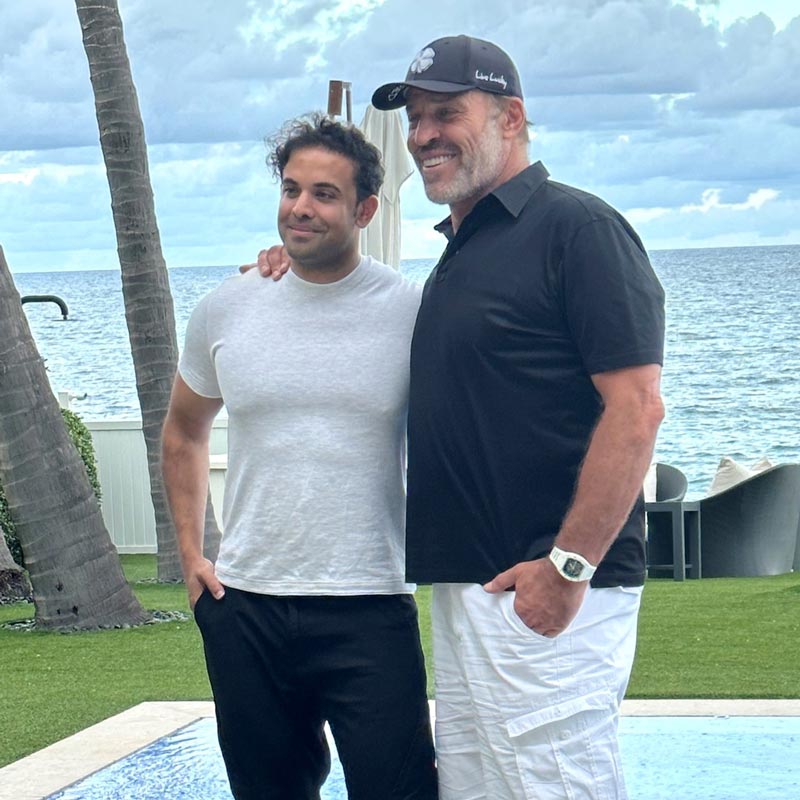Welcome to Eterna Health, where healing meets innovation. Founded in 2023 by the visionary CEO and Founder, Dr. Adeel Khan, our regenerative medicine company emerged to bridge gaps in the global medical system.
Dr. Khan identified a critical need for transformative care beyond borders. Witnessing patients deteriorating without improvement in traditional treatments, he recognized a calling to address the flaws in the system. Eager to aid these overlooked individuals suffering from chronic pain, illnesses, and various health concerns, Dr. Khan knew his innovative therapies, including stem cells and gene therapies would actually heal these sick people.
News of Dr. Khan’s groundbreaking work spread rapidly, earning him international acclaim. His healing therapies have reached a diverse clientele, including celebrities, athletes, and politicians. With a commitment to accessibility, Dr. Khan envisions bringing these transformative treatments to everyone.
Backed by training from some of the country’s finest medical practitioners, Dr. Khan leads a team of skilled physicians dedicated to advancing regenerative medicine.
What began in Toronto has evolved into a global initiative. Eterna Health has formed strategic partnerships in Dubai, Los Cabos, and Tokyo, extending our reach far beyond borders. As we continue to grow, clinics are opening in various parts of the world, embodying our mission to make innovative healthcare accessible worldwide.
Join us on the journey to redefine health and well-being through cutting-edge regenerative medicine at Eterna Health.
Our medical clinics have the most unique and innovative technologies. Our team at Eterna Health consists of a skilled team of medical doctors and scientists who are constantly researching, improving and creating the best procedures.
We are proud to be the exclusive provider of the second generation of mesenchymal stem cells (MSCs) in our clinics. These advanced stem cells are derived from induced pluripotent stem cells (iPSC-derived MSCs or iMSCs), granting them unique properties that significantly enhance their regenerative capabilities. Notably, these stem cells have been engineered to augment their regenerative potential and evade detection by the immune system, thus improving their engraftment efficiency. A key feature of our technology is a failsafe mechanism designed to prevent uncontrolled cell proliferation, ensuring there is absolutely no risk of tumor growth.
In addition to our unique MSCs, we have developed proprietary protocols to optimize their effectiveness. Our umbilical cord stem cells are carefully manufactured to maximize cell viability. To further enhance their therapeutic impact, we have integrated specific peptides into our protocols. In certain situations, inflammatory microenvironments can increase the immunogenicity of MSCs, potentially leading to reduced efficacy. By strategically combining our MSCs with these peptides, we can effectively mitigate inflammation, thereby maximizing the benefits of the MSCs while ensuring both safety and efficacy for our patients.
We are currently the only clinics to have second generation exosomes and are in the process of developing second generation stem cells.
Our biology suggests that we are capable of living over 120 years, yet the average U.S. citizen doesn’t make it past their 70’s. Less than 5% make it to their nineties, a mere 1% become centenarians, and only one single person in recorded history has ever made it to 120 years old – in other words, we’re leaving a lot on the table.

Tony Robbins: Business strategist, peak performance coach, New York Times best-selling author
REGENERATIVE MEDICINE
is leading the way in the medical revolution and will continue to evolve until illness-based treatments are replaced by wellness-based solutions.

Jordan B Peterson: Best-selling author, clinical psychologist and famous podcaster
“Eterna Health did an unbelievable job with my procedure! Dr. Kahn and his team made me feel extremely comfortable the entire time! As a whole, they are the smartest team, the best people, and they care so much about helping others!”
Adeel Khan, M.D., is a Canadian Board Certified Physician who is the founder of Eterna Health Clinics. He brings global recognition from other health care professionals, elite athletes, and patients from all walks of life. Dr. Khan is recognized as one of the pioneers in the field of interventional orthobiologics and is highly respected for his contributions for clinical translation.Dr. Khan is recognized as one of the leaders in the clinical application of cell and gene therapies for anti-aging and chronic diseases.
All Rights Reserved. © Eterna Health 2024